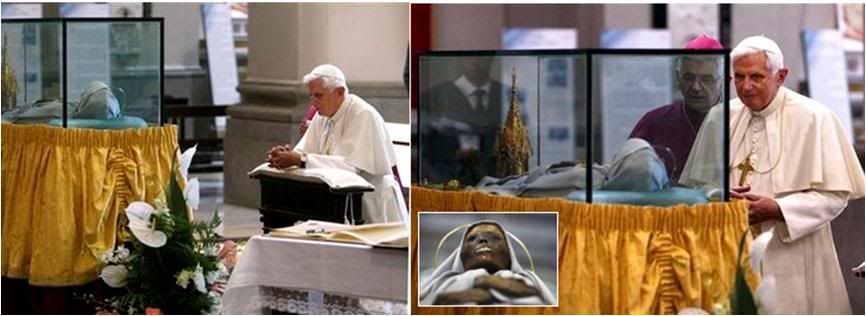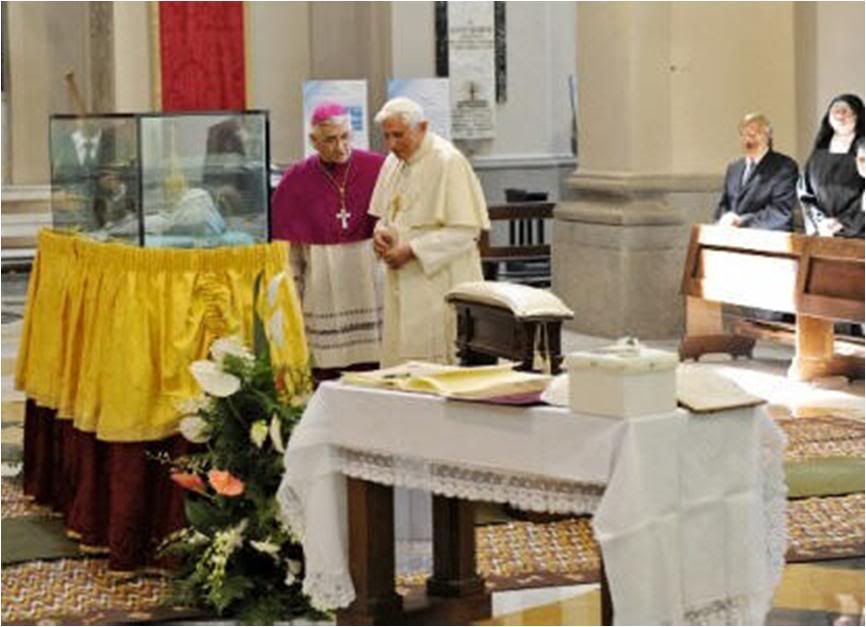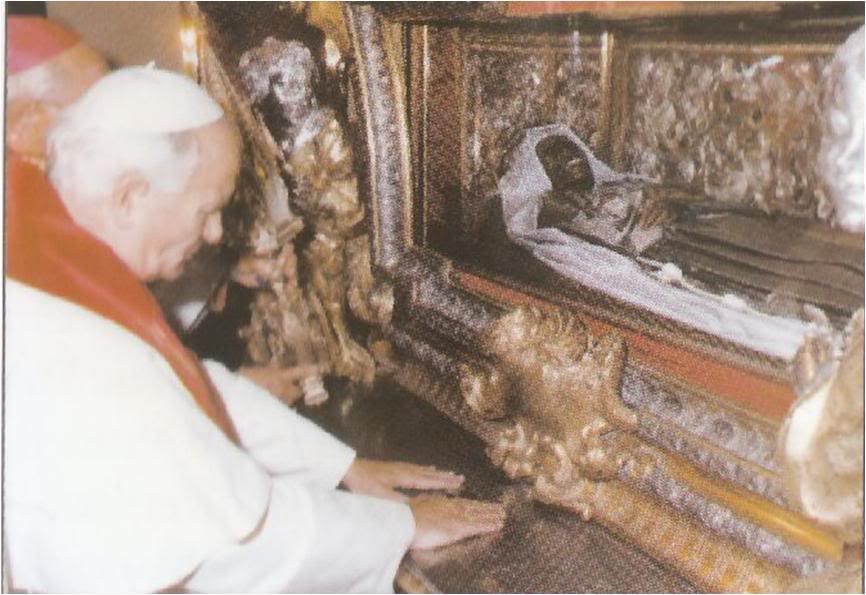

 The Pope speaks to Santa Rosa
The Pope speaks to Santa Rosa
by Nicola Moncada
Translated from

Sept. 6, 2009

The impression was quite clear. The Pope, standing next to her, spoke with Rosa. The longuage, not earthly, was inaudible to those present. Nonetheless, eloquent.
And something happened - between the Pope who, after venerating her remains, walked up to her urn, almost caressing it with his hand, and the saint who, eight centuries ago, became a humble 'handmaid of Christ'.
The Pope, motionless, head inclined slightly, contemplated the saint. And it was as though, through the glass, there was someone watching over this face-to-face in which something seemed to pass between the two interlocutors.
Words that cannot be said in a human language, but which, in another 'order' of reality, was a long discourse. Very tender, subdued, firm.
It was only minutes earlier that the Pope entered the Shrine. He was welcomed by the Poor Clares [who run the Clarisse monastery of Santa Rosa), their Mother Superior and little girls aspiring to become novices.
Next to the Pope, discreetly stepping aside, or providing information when necessary, was the Bishop of Viterbo, Mons. Lorenzo Chiarinelli.
In a church that was silent, near-empty but 'engrossed', the Pope knelt. And prayed.
After that, he rose to meet the saint. Then, he stopped to look at her heart in a reliquary to the right of the urn.



On the left, a table. On it, a brand new papal zucchetto in a box, handmade by the Poor Clares [He wore it briefly, then left it to them as a memento); a parchment with the sisters' petition for the Pope's Apostolic Blessing; and an impressive historical document: an old parchment about half a meter long and several centimers wide, on which, in Rosa's time, or shortly thereafter, an anonymous chronicler had written the manuscript now known as 'Vita I' - the first written story of the saint. The original, one might say. (In Vita II, othere miracles were attributed to Rosa - those familiar from Franciscan tradition.)
That parchment also has the first image of Rosa - a rather stylized sketch - a face that is tender and rapt, with a slightly prominent chin, her eyes downcast.
It is very moving, this Vita I, which is normally kept jealously in the archive of the Basilica, and whose lines still seem to emit the spiritual effusion of the saint.
Afterwards, before leaving the Basilica, the Pope was presented with a a delegation of 'mini-facchini' [children aspiring to become facchini, or 'bearers' of the saint's legendary Macchina when they come of age].

The Pope, not bound by protocol, showed his great humanity with the children. he spoke to them like a father, but also, like one of them.
From the Monastery's brochure: John Paul II venerates the Rose of Viterbo during his 1984 pastoral visit.
 Images of Santa Rosa: Below left, the sketch found in Vita-I; right, a 1999 anthropological reconstruction of what Rosa could have looked like at age 17 - scientists worked with the anthropometric data from her mummified body.
Images of Santa Rosa: Below left, the sketch found in Vita-I; right, a 1999 anthropological reconstruction of what Rosa could have looked like at age 17 - scientists worked with the anthropometric data from her mummified body.
 NB: I have been unable to find any information online o8 when and how and why the body became mummified.
NB: I have been unable to find any information online o8 when and how and why the body became mummified.
[Modificato da TERESA BENEDETTA 10/09/2009 03:53]